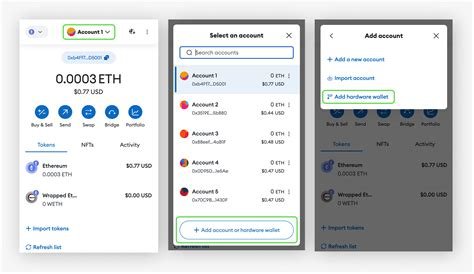Using Metamask input data for NFT exchange without abi

As for the replacement of blockchain NFTS (NFTS), one of the most common challenges is access to the input data required by the SWAP protocol. In this article, we will study a potential solution that allows developers to use Metamask input to automate the swap process using the Metaswap protocol.
background
Metaswap is an open code, a decentralized NFT trading platform built on top of the Solana blockchain. It provides a set of APIs and tools for developers to interact with the platform programically. One of these APIs is the SWAPfeature that allows users to exchange one NFT for another using their Metamask portfolio.
The problem
Unfortunately, Metaswap does not provide an objectinputdataor a similar mechanism for access to the input data required by the UAP protocol. This means that developers must manually retrieve and send the necessary information from their Metamask portfolio using external APIs or libraries.
Decision: Using input data for Web3.js and Metamask
To overcome this challenge, we will focus on building an automated solution using Web3.js and Metamask input data. Here is a step -by -step guide:
- Install Web3.js : First, install the Web3.js library using NPM or yarn:
NPM installation of web3
`
- Get Metamask Input : Use the Metamask
Eth_gettransctionreceiptmethod to retrieve the transaction receipt for your current transaction. You will need this information to send the necessary entry information.
`javascript
CONST Web3 = Requirement (‘Web3’);
CONST metamask = new web3.web3 (new web3.providers.httpprovider (‘
const transactionreceipt = metamask.eth.gettransctionreceipt (TXID);
`
- Input data
: Use the
Transactionreceiptobject to retrieve input data for your SWAP transaction. You will need to look for specific fields, such as the addresses offrom ', to' and Value.
`javascript
Const fromddress = transactionreceipt.conctaddress;
const fromvalue = txparam.address;
`
- Create a Swap feature: Write a new feature that takes the retrieved input data and uses it to create a swap request using Metaswap API.
Sample code
Here is an exemplary fragment of code that demonstrates how to use web3.js, Metamask input and Metaswap API:
`javascript
Async feature swapnfts (fromddress, toaddress, value) {
Const TransactionParam = {
Address: Freuds,
Sum: Value,
Gasprice: 20.00, // In Wei
Gaslimit: 3000000, // Inwei
Nonce: Web3.eth.gettransctionCount (from Address),
Data: ”
};
try {
CONST RESULT = Wait Metamask.Web3.endrawransction (TransactionParam Transaction);
Const Transactionreceipt = Wait Metamask.Web3.eth.gettransctionreceipt (Result.Awtransctionhash);
Return {from: transactreceipt.conTractaddress, to: toaddress, value};
} catch (error) {
Console.error (error);
Throwing error;
}
}
`
Conclusion
Using Metamask and Web3.js input data, developers can automate the swap process for NFT without having to have access to the ABI object. This solution provides a scale and effective way of interacting with the Metaswap protocol, which facilitates integration with other platforms.
Please note that this is only an example fragment of code and may require modifications to work in your particular case of use. In addition, be sure to save your Metamask private key and transactions to prevent unauthorized access.
I hope this article will provide a useful solution for developers who want to automate the Swap process using Metamask login!

